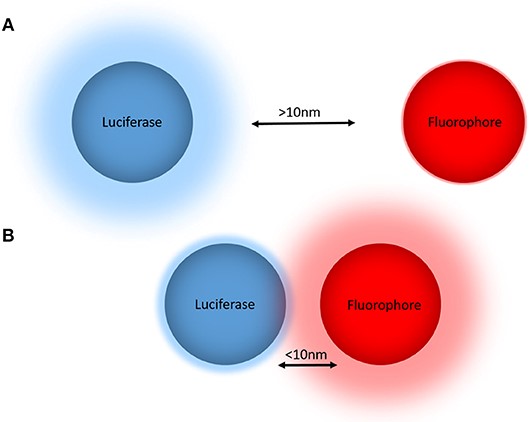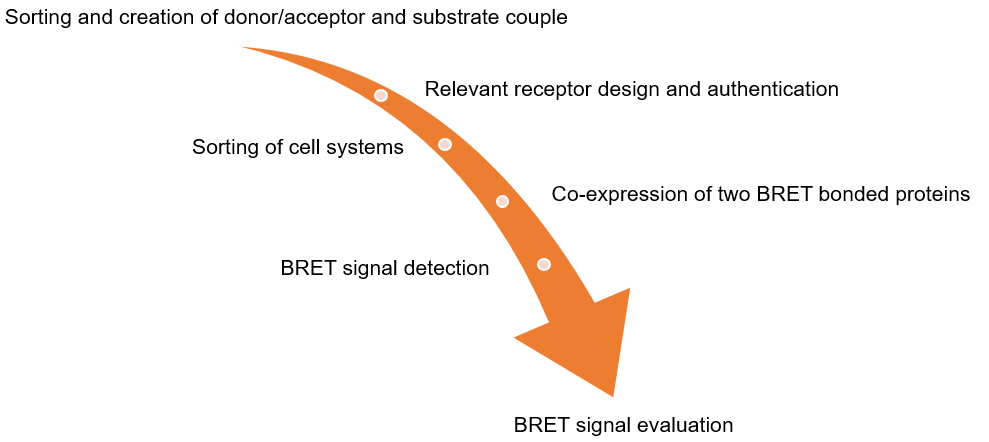Bioluminescence Resonance Energy Transfer (BRET)
Bioluminescence resonance energy transfer (BRET) is a highly efficient technique for monitoring proximity within live cells. In the BRET technique, dipole-dipole energy is transferred from a donor enzyme (luciferase) to an acceptor fluorophore to generate a quantifiable signal indicative of proximity between proteins and/or molecules tagged with complementary luciferase and fluorophore partners. Currently, BRET has been widely used to analyze a range of studies, including ligand binding, intracellular signaling, and receptor trafficking, etc. In theory, BRET technology can be used to monitor the proximity of any protein or molecule for which appropriate fusion constructs.
For further upgrades, small, bright and stable nanoluciferases (NanoLuc; Nluc) have been developed, and their application in NanoBRET has greatly broadened the potential applications of BRET detection. The development of these powerful technologies has made it easier to study protein-protein interactions, protein-ligand interactions, and/or molecular proximity.
 Figure 1. The principle of bioluminescence resonance energy transfer (BRET) for monitoring biological proximity (Dale, N.C.; et al. 2019)
Figure 1. The principle of bioluminescence resonance energy transfer (BRET) for monitoring biological proximity (Dale, N.C.; et al. 2019)
BRET service provided by Profacgen:
BRET has proven to be a powerful and widely applicable tool for monitoring proximity and interaction. The BRET assay protocols established by Profacgen include:
 Figure 2. BRET experimental process - Profacgen
Figure 2. BRET experimental process - Profacgen
In addition to conventional BRET, Profacgen also offers several commonly used BRET derivatives, including BRET1, BRET2, and eBRET. At the same time, we introduced an optimized NanoBRET assay with optimal spectral overlap, increased signal, and lower background compared to conventional BRET assays. For different research needs, we also provide the combined use of BRET with other innovative biological tools
As a protein research expert, Profacgen has accumulated a lot of successful experience in protein interaction analysis, and has assisted many customers around the world to complete projects with high efficiency and high quality. Our highly competitive prices and unprecedented expertise have earned us widespread acclaim. Request more information to find out how Profacgen can help.
References
- Dale, N.C.; et al. NanoBRET: The Bright Future of Proximity-Based Assays. Front. Bioeng. Biotechnol. 2019.
- Gersting, S.W.; et al. Bioluminescence Resonance Energy Transfer: An Emerging Tool for the Detection of Protein-Protein Interaction in Living Cells. Functional Genomics. 2011.
Fill out this form and one of our experts will respond to you within one business day.